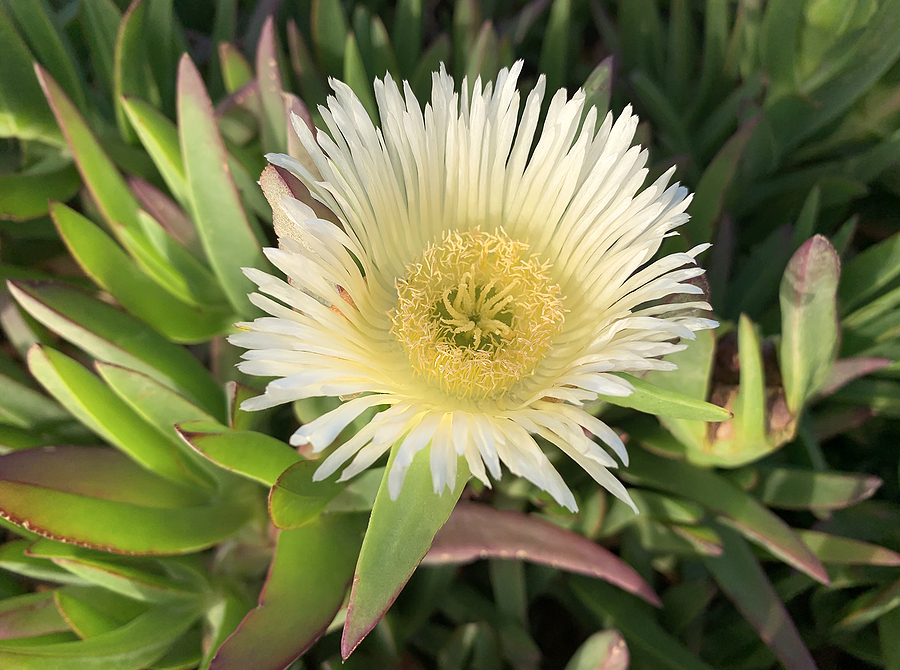Drought-friendly Plants are a beautiful and water-saving option for homeowners in hot climates. From neatly aligned succulents and cacti to a full vibrant explosion of California native plants, the options for drought-friendly landscaping can be adapted to any style with the help of a landscape architect. Utilizing the native plants to the region and their natural resilience to hot weather and dry soil makes these landscapes more sustainable long-term – and there’s less of a chance that you’ll have to replace struggling plants year after year.
Whether you are in the process of designing a new yard with a landscape architect or are simply looking for a not-too-thirsty new addition to your garden, the following drought-friendly plants are sure to impress with their resilience and beauty.
Contents
Tips from a Landscape Architect About Drought-friendly Plants
Ground Covers
Creeping Rosemary. Creeping rosemary is an aromatic evergreen that provides durable ground cover and flowers in summer. The pointy green leaves are commonly used for cooking.
Ice Plant. This ground cover is commonly seen carpeting the California coastline. Some varieties flower all summer long. Dry, sandy soil is best for ice plants to thrive and spread.
Vines
Cypress Vine. This vine produces feathery leaves and delicate star-shaped flowers that bloom in summer. Once established, this vine tolerates drought and climbs with ease.
Trumpet Creeper. This high-climbing vine boasts showy, waxy red flowers and dark green leaves. If given the space, this vine will colonize very densely, so it is often planted near concrete to limit its growth potential. It is moderately drought tolerant and blooms in full sun.
Cacti & Succulents
Claret Cup Cactus. A desert beauty that grows in warm, arid climates, the claret cup cactus goes by many names. Also known as a hedgehog cactus, this small plant produces attractive reddish orange flowers and requires little to no care.
Hens and chicks (Sempervivum tectorum). This small succulent grows in rosette-shaped clusters, with a plate-sized “mother” cluster usually surrounded by smaller offspring. Rocky, dry, or nutrient-challenged soil is ideal.
Shrubs
Lester Rowntree Manzanita. This medium to large shrub grows clusters of pink bell-shaped flowers. It takes 8-10 years for this plant to fully mature, at which point it develops a rich purple bark and blue-gray foliage. This tree prefers well-drained soil and minimal supplemental watering in summer.
Palmer’s Indian Mallow. This sun-loving, tough shrub produces punchy yellow flowers in spring and summer. It tolerates a variety of soil types and does not require frequent watering, especially in summer.
Rockrose. Once established, this plant needs very little maintenance and can withstand drought, heat, strong winds, and saltwater. Wide, papery flowers bloom in late spring and early summer.
With information and imagination, a stunning drought-tolerant garden full of California native plants is possible. In addition to saving money on your water bill, cultivating a drought-friendly garden with a wide variety of plants can attract pollinators, hummingbirds, and butterflies. These low-water plant suggestions are the perfect place to start.
Talk to a Landscape Architect About Drought-friendly Plants
A professional landscape architect can help reinvent your yard into a space that you enjoy in every season. If you are looking for a professional to help with your Bay Area landscape design, contact Meadowbrook Design! You can schedule a consultation by clicking here. Our office can be reached at (925) 200-3661.

